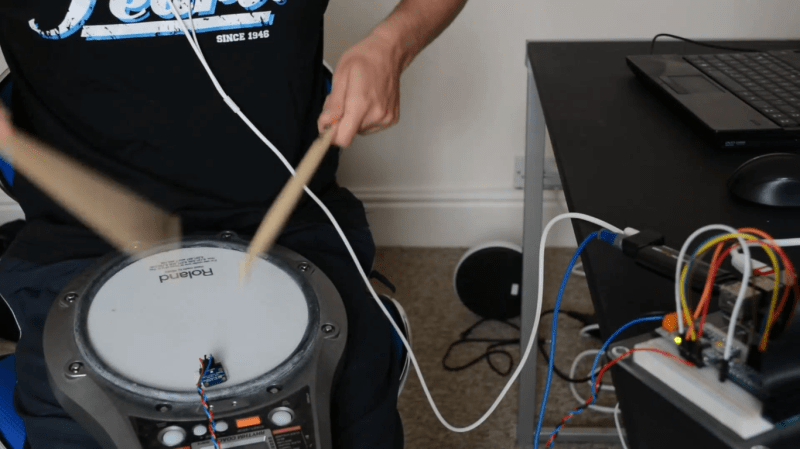Piezoelectric sensors are great for monitoring mechanical impacts with a microcontroller. Whether you’re monitoring knocks on a door or watching a heartbeat, they are a cheap way to get the job done. They do have their downsides, though, so when [Jeremy] wanted to build an electronic drum set, he decided to use more expensive accelerometers to measure the percussive impacts instead.
Even though piezo sensors are cheap, they require a lot of work to get them working properly. The ADXL377 3-axis accelerometer that [Jeremy] found requires much less work, plus provides more reliable data due to a 1kHz low-pass filter at the output. In his setup, a Raspberry Pi handles all of the heavy lifting. An ADC on each drum sends data about each impact of the drum, and the Raspberry Pi outputs sound via the native Alsa driver and a USB sound card.
This project goes a long way to show how much simpler a project like this is once you find the right hardware for the job. [Jeremy]’s new electronic drums are very well documented as well if you are curious about using accelerometers on your newest project rather than piezo sensors. And, if you’re into drums be sure to see how you can have drums anywhere, or how you can build your own logic drums.















Bit too much of a delay there. Unless it’s just the video as he’s playing it pretty well. That would be unplayable for me.
I am more into hand drums. If I put one of these in a mushroom headed sensor, I could play all three channels by having the X and Y as a (45 degree) horizontal and Z as a conventional pressure hit. Nice!
Nice to know about this sensor. The others are digital.
If I took out all the digital, no PD at all. Or interface to a drum machine, you will get low latency.
I am surprised that nobody mentions http://www.DrumsAnywhere.com/ (the software, not the hardware project.)
It is a very clever application that uses only ONE piezo sensor to simulate 8 drum pads with no additional hardware!
Check out their video: https://www.youtube.com/watch?v=bCBUMfYh8lQ